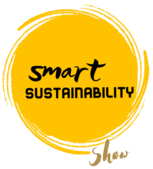NAture-Inspired Living: Blueprint for Design & style for the future
Imagine a world where our cities breathe, our furniture grows lighter, and our buildings mimic the resilience and efficiency of natural systems. As the Smart Sustainability Show gathers visionaries and innovators, one message rings clear: nature holds the blueprint for a regenerative, resource-wise future. Nowhere is this more evident than in the latest breakthroughs in biomimicry and digital design—where technology meets nature’s wisdom to create solutions for sustainable living.
Biomimicry is the practice of drawing inspiration from nature’s time-tested patterns and strategies of which we have shown and shared many free patents of nature.
From the structure of leaves to the strength of bones, the natural world offers ingenious solutions to complex problems. Today, a growing number of designers and engineers are harnessing these lessons to create products and spaces that are not only efficient and beautiful but also sustainable.
As this one: The Ta.Tamu Chair
A striking example of this philosophy is the Ta.Tamu chair, a collaboration between Dassault Systèmes and designer Patrick Jouin. This 3D-printed, foldable chair is more than just a piece of furniture—it’s a manifesto for a new kind of design thinking, one that fuses digital innovation with the elegance of nature.
How Nature shaped this chair
Inspired by Bones and Joints: The chair’s lattice structure echoes the internal architecture of human bones, balancing strength and lightness. Joints and hinges are modeled after the articulation found in living organisms, ensuring flexibility and durability.
Minimal Material - Maximum Strength: By studying how nature uses only what it needs, the design team used topological optimization to remove unnecessary material, reducing the chair’s weight by 75% compared to a solid form—while still supporting up to 100 kg.
No Assembly Required: The chair is 3D-printed in a flat, folded position. It unfolds into a functional seat, eliminating the need for complex assembly and reducing packaging waste. Finally we’re getting somewhere. This is exciting!
The Ta.Tamu project was developed on Dassault Systèmes’ 3DEXPERIENCE platform, using AI-powered virtual twins to simulate and optimize every aspect of the design. This allowed the design team to:
Model Real-World Performance: Simulate stress, pressure points, and movement, ensuring the chair’s resilience and comfort.
Integrate Life Cycle Assessment: Evaluate environmental impact from the earliest design stages, guiding choices for maximum sustainability.
Enable Local Production: The chair can be 3D-printed anywhere, reducing transportation emissions and supporting on-demand, decentralized manufacturing, a biggie for us. At the Smart Sustainability Show, we advocate to strengthen local production for most of our demands. Not only because it cuts back on transportation needs - but because it enables local economies to reinvent themselves and become self-sufficient.
Lessons for urban living beyond the chair
The principles behind the Ta.Tamu chair extend far beyond furniture. They point the way toward a future where our cities and homes are shaped by nature-inspired thinking:
Green Roofs and Urban Oases: Just as the chair’s structure mimics bones, green roofs and living walls in cities mimic natural ecosystems, cooling buildings, managing water, and supporting biodiversity.
Resource Efficiency: By using only what’s needed and optimizing design through digital tools, we can create everything from buildings to everyday products with less waste and lower environmental impact.
Customization and Adaptability: Nature thrives on diversity and adaptability. Digital platforms now enable us to customize products to fit local needs and materials, just as ecosystems adapt to their environments.
Inspiring a generative economy — the golden focus for the future
The Ta.Tamu chair is more than an object; it’s a call to action for industry and individuals alike. By embracing a generative economy—one that creates value through collaboration, data, and respect for natural limits—we can move beyond extractive, wasteful models. As Anne Asensio, Vice President of Design Experience at Dassault Systèmes, puts it: “To improve the world we live in, we have to change the way we produce, design and use materials. Ta.Tamu represents a call to action for industry to embrace a generative economy instead of continuing to create without limits”
Nature: Greatest Classroom and Miracle Teacher
As we seek solutions for sustainable living, nature remains our greatest teacher. One that should be included and adopted in our education. So that nature becomes the go-to source for students when looking for solutions. And not an afterthought.
The fusion of digital innovation and biomimicry is opening new frontiers—whether it’s a rooftop garden, a foldable chair, or the very fabric of our cities. The future is not just about living alongside nature, but living like nature: adaptive, efficient, and endlessly creative.
Let the Smart Sustainability Show inspire you to look up, look around, and discover the nature-inspired solutions waiting to transform your life and community.

